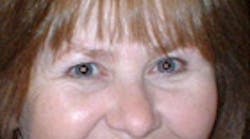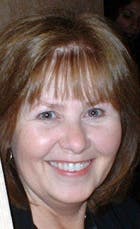by Ann-Marie C. DePalma, RDH, MED, FADIA, FAADH
Many hygienists focus their clinical careers in general practice. Others focus on the specialties of periodontics, pedodontics, and even orthodontics. But whether a hygienist works in a general or specialty practice, there is a group of patients that is often taken for granted -- the "tween" or early teen population.
A tween is defined as a child between the ages of 9 and 12 -- no longer a child but not yet a teenager. Teenagers are considered to be the ages of 13 to 19. It is in those tween and early teen years that risky behaviors begin to emerge. As dental professionals, would you know how to discuss risky behaviors and the health consequences with your patients, parents, or caregivers?
Cathy Hester Seckman, RDH, has developed a program called "Paying to Play: Teen Risk Behavior and Lifelong Consequences" to help hygienists have those conversations.
-----------------------------------------------------------
Other articles by DePalma
-----------------------------------------------------------
The objective of "Paying to Play" is to inform hygienists and other dental team members about areas of teen risk behavior with which they may not be familiar.
For example, dental professionals are aware of various tobacco products, but many may not be aware of a new product that recently surfaced -- a fully dissolvable tobacco product. This product is not yet available nationwide, but is being test marketed in Colorado, Kansas, and North Carolina. It appears to be harmless, similar to a Tic Tac, is easily concealable, and delivers nicotine unobtrusively, without smoke or a lump in the cheek.
Cathy also discusses other risky behaviors, such as tongue splitting, sexual experimentation and HPV virus risk, obesity, sports energy drink usage, and oral and perioral piercing. She also provides effective communication tools that can be used with tweens and teens to help them deal with risky behaviors.
Cathy's program is an outgrowth of her previous CE programs that focus on pediatric oral issues, including treatment protocols, communication tools, prenatal issues, and nutritional issues. As a clinical hygienist in a pediatric dental practice, Cathy has experienced the challenges and joys of working with younger patients. None of her other programs focus on tweens and teens, however. She admits that in clinical practice she would often spend more time with a screaming four-year-old than with the quiet teenage sibling who might be in more need of her education.
A hygienist sees the teenager in between the high decay rate and periodontal problem years, and she or he sees the patient more often than other health-care providers. Thus, a hygienist is more likely to recognize changes in a patient's oral tissues, behaviors, or motivation for oral health. Other team members can also benefit from the program. Business team members may be the first to notice a piercing, an assistant may get into a conversation about sports and sports drinks, and the doctor may discuss childhood obesity with a parent or caregiver. The more information a team possesses, the better the team becomes an advocate for their patients.
Cathy includes handouts in her program that include an outline of "Pay to Play" and references and resources that can be used in practice for patients and parents. Her communication section contains a group activity that demonstrates the value of listening for effective communication. She also includes an award-winning video produced by a teen on the importance of presuming competence. Cathy constantly strives to engage the audience by rarely standing behind a podium or having her back to anyone.
As a graduate of West Liberty State College (now University) in West Virginia, Cathy has committed herself to lifelong learning. She has practiced clinically as a hygienist for 32 years, with more than 12 years in pediatric practice. From a young age Cathy has enjoyed writing, and says that when she was about 10 years old she wrote a derivative short story about a tin man and a cowardly lion. In the 1980s she sold her first article to RDH magazine, and today, thanks to Mark Hartley, she has published more than 75 RDH articles.
In addition to dental articles, Cathy has published nonfiction works for magazines and newspapers, and has produced two fiction novels, "Weirdo World" and "Bad Moon Rising," and an anthology entitled "H2O Mysteries" and short stories. (All are available at amazon.com.) She is also an accomplished book indexer, mostly for college textbooks, but also for a number of dental hygiene publications. Her passions beyond dental hygiene and writing include motorcycling with her husband of 38 years, camping, hiking, and canoeing.
Cathy has been an ADHA member for 10 years, and regrets not having become a member sooner. She feels that ADHA is the best hope for hygienists to take control of the profession. Over the years she has forged relationships with a variety of dental product companies, and this has developed into several sponsorship opportunities for her programs.
Challenging patients, especially younger patients, can provide dental professionals with encounters that stress yet fulfill our professional lives. Understanding patients' clinical, emotional, and physical needs can benefit the patient, family, and practice. Communicating with and educating the tween and teen patients and their families will assist them in developing lifelong habits that translate to health and wellness in the future.
For more information on Cathy or her programs, contact [email protected]. RDH
ANN-MARIE C. DEPALMA, RDH, MEd, FADIA, FAADH, is a Fellow of the American Academy of Dental Hygiene and the Association of Dental Implant Auxiliaries, as well as a continuous member of ADHA. She presents continuing education programs for dental team members on a variety of topics. Ann-Marie is collaborating with several authors on various books for dental hygiene and can be reached at [email protected].
Thought for the month:
How beautiful is youth! How bright it gleams with its illusions, aspirations, dreams!
-- Henry Wadsworth Longfellow
The INeedCE course for August
"Computerized Digital Occlusal Analysis of Occlusal Splints." Readers of RDH magazine will receive 50% off the regular price of $49, which is $24.50 after discount, when using code AMAUG13.
Description
One benefit of occlusal splint therapy is a reduction in masticatory muscle hyperactivity related to the development of an optimal programmed occlusion. This normalization of muscle activity can reduce the effects of cumulative adverse force on the teeth, periodontium, muscles, and temporomandibular joints.
Current literature defines a therapeutic occlusion as multiple, bilateral posterior teeth contact with the mandibular condyles physiologically seated and immediate separation of the posterior teeth by the anterior teeth in all excursive movements. These contacts are usually identified by occlusal marking but research has shown that conventional identification of occlusal contacts with inked silk, paper, or plastic ribbon is not accurate.
The rationale and application of computerized digital occlusal analysis to verify a therapeutic occlusion with occlusal splint therapy is presented. The advantages for clinical documentation and validation of research are discussed.
Past RDH Issues







